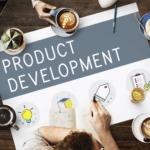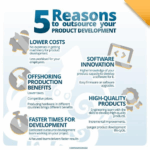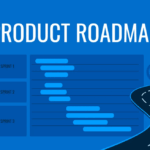Procurement can mold any business into an efficient, cost-effective, and sustainable supply chain. It’s the decision between single sourcing or sole sourcing, which is one of the great challenges that organizations encounter, that has always become bothersome when dealing with supplier selection strategies. Their effects on operations vary, as does their application.
Understanding the difference between sole and single source can help businesses optimize costs, mitigate risks, and maintain a competitive edge. However, which approach suits your business best? Is it that you’re going to plan for any flexibility in the path of using a single supplier, or is a sole supplier your only option? In this guide, we’ll break down single source vs sole source, highlighting key aspects, advantages, disadvantages, and best practices for choosing the right approach.
What Is Single Sourcing? The Strategic Choice for Procurement Success
Single sourcing refers to the practice of choosing one supplier for a particular product or service, even when multiple suppliers are available. Businesses opt for this approach to build stronger relationships, negotiate better pricing, and ensure quality consistency.
Advantages of Single Sourcing:
- Cost Efficiency: Single-sourcing companies will reduce costs related to procurement. Buying from one supplier allows for negotiating a more favorable deal for bulk orders or discounts and minimizing costs made on administrative services for several suppliers.
- Better Supplier Relationship: This eventually builds trust and a cooperative partnership, which can be translated into long-time close relationships between the supplier and the firm, allowing customized solutions, priority service, and better problem resolution to supply chain interruptions.
- Quality Control Guarantees: Single-sourcing has the added advantage of consistency. Since a single supplier provides that specific item, the resulting uniform quality is assured so that all materials or components will meet similar specifications each time.
- Effective Communication: It gets too complicated and wastes time trying to deal with different suppliers. It becomes simplified and nearly error-free, and misinterpreted and inefficient in the entire procurement process through a single-source approach.
Risks of Single Sourcing:
- Supply Chain Disruptions: Relying on just one supplier can be risky. If the supplier faces operational challenges such as production delays, raw material shortages, or financial instability, the buyer’s business could suffer from unexpected supply chain interruptions.
- Reduced Negotiation Power Over Time: While single sourcing allows businesses to negotiate initially, long-term dependency on a single supplier can lead to pricing rigidity. Over time, suppliers may become less willing to offer discounts or make accommodations, knowing that the buyer has limited alternatives.
A study by Deloitte (2024) revealed that 57 percent of businesses using a single-source strategy reported improved cost efficiency, highlighting its strategic importance in modern procurement.
What Is Sole Sourcing? When You Have No Other Option
Unlike single sourcing, sole sourcing means that there is only one supplier available for a particular product or service. This could be due to proprietary technology, government contracts, or industry regulations.
Why Businesses Rely on Sole Sourcing:
- Proprietary Products Have Limited Availability: Some suppliers have exclusivity on a product/technology, and hence, no other source would be available. This is often in cases such as the pharmaceutical, aerospace, and defense industries.
- Regulatory or Compliance Requirements: In certain industries, sole sourcing is mandated by compliance controls. For example, government contracts can require that only one supplier be approved, thereby leaving the businesses little choice but to comply.
- Specialized Knowledge: Some suppliers have highly specialized products or services that cannot be easily matched. This skill is fundamental in the technical fields, where excellence, precision, and conformity to accepted industry standards will be required.
Disadvantages of Sole Sourcing:
- Sole Sourcing Increases Cost: The absence of competition allows sole suppliers to exercise flexibility over pricing. Oftentimes, companies resorting to sole sourcing pay higher prices for products and services.
- Supplier Dictates Terms: The supplier commands excessive bargaining power against the purchasing company concerning the relationship. This can lead to one-sided conditions, price escalations, and less room for negotiation.
- Limited Alternatives: The choice of a sole-source supplier for the business may become an extremely risky option, as when the supplier faces financial difficulties, either product availability or price changes, there are ultimately very few alternative sources to turn to.
A 2023 Gartner report found that 68 percent of procurement professionals consider sole sourcing a high-risk strategy due to supply chain vulnerability, underscoring the importance of planning.
Single Source vs. Sole Source: Breaking Down the Differences
Many people confuse single sourcing vs. sole sourcing, but the two strategies have fundamental differences.
| Feature | Single Sourcing | Sole Sourcing |
| Supplier Options | Multiple suppliers exist, but the buyer | Only one supplier is available |
| Reason for Selection | Strategic business decisions | Lack of alternatives |
| Competitive Bidding | Possible, but the buyer chooses not to | Not possible |
| Common Industries | Possible, but the buyer chooses not to | Not possible |
| Risk | Supplier dependency | Higher cost, lack of competition |
| Cost Impact | Can lead to volume discount | Higher cost due to lack of competition
|
Which One Should You Choose?
If your goal is cost optimization, better supplier relationships, and quality control, single sourcing is the way to go. However, if your business operates in an industry where only one supplier exists (such as pharmaceuticals or aerospace), sole sourcing is inevitable.
This is where BrandNewMD, a leading sourcing brand, helps businesses navigate procurement complexities by offering strategic supplier evaluation services. Visit Brand New MD to explore tailored sourcing solutions.
How to Choose Between Single Source and Sole Source?
Here are some of the factors that should be considered before going for sole versus single source:
- Availability of Vendors: With more than one seller, single sourcing is usually better and comes with competitive prices and alternatives if the current supplier is not delivering.
- Risk Management: In sole sourcing, a powerful contingency must be in place because null options on the losing supplier will risk disruption.
- Cost Considerations: Single sourcing will typically permit better price negotiations, while sole sourcing usually means higher costs because there is no competition.
- Industry Regulations: Across the industries, sole sources are sources of such due to regulatory matters requiring one to comply; as such, the decision is not up for negotiation.
Need expert procurement advice? BrandNewMD offers industry-leading supplier analysis and procurement strategies. Learn more at Brand New MD: Efficient Global Sourcing Company for You.
Making Smarter Procurement Decisions
It is a study of single source vs sole source – an essential aspect of optimized procurement strategy. While expenditure may be saved with single sourcing, sole sourcing is forced in the absence of constraints in the market.
With this knowledge in mind, businesses must assess supplier availability, weighing risk factors and demand specifics related to the industry. For your supplier diversification and for every strategy you need from the practical world of procurement experts., BrandNewMD has got you covered.
Optimize your procurement strategy today. Visit Brand New MD for expert sourcing solutions tailored to your business needs.









